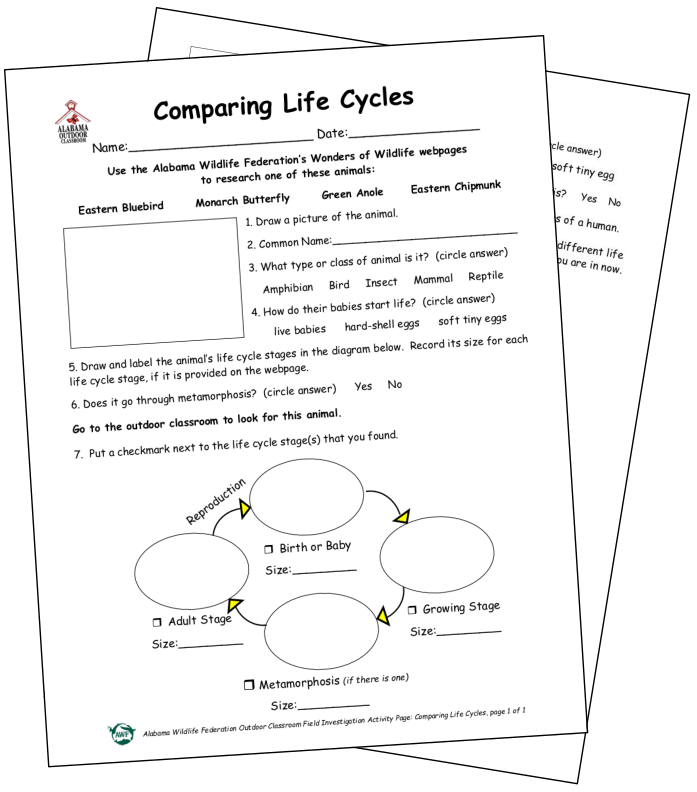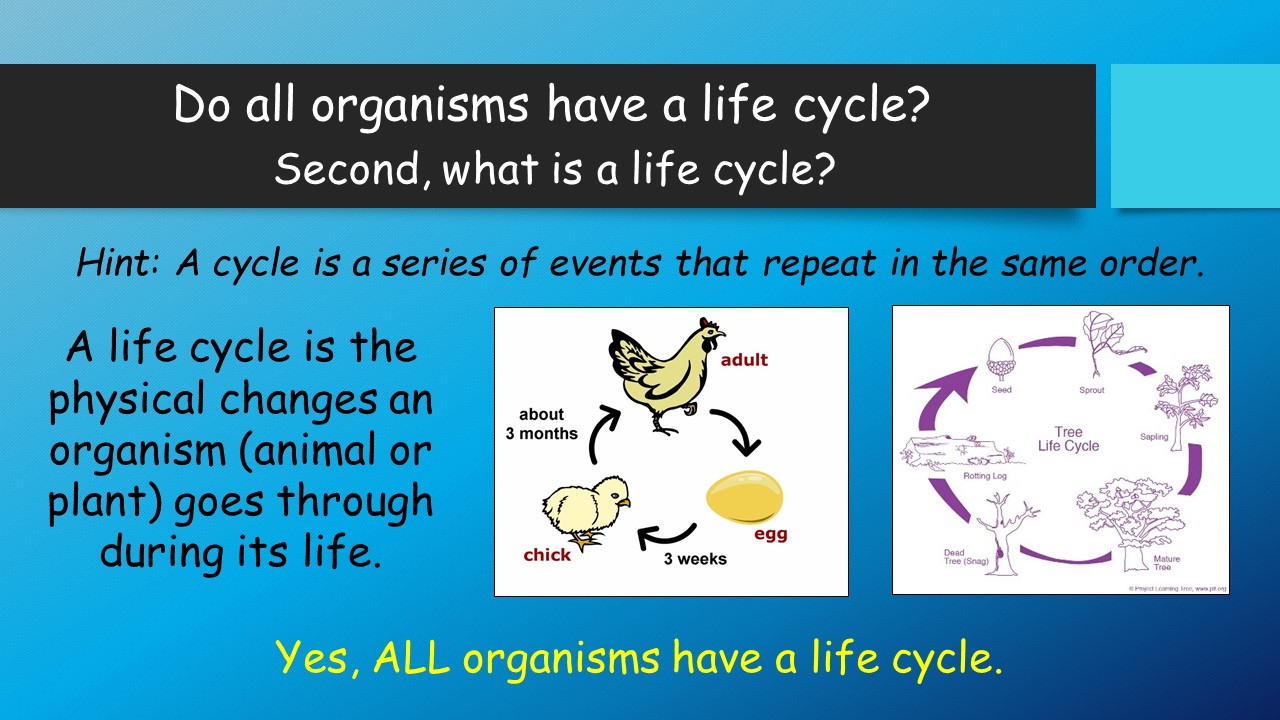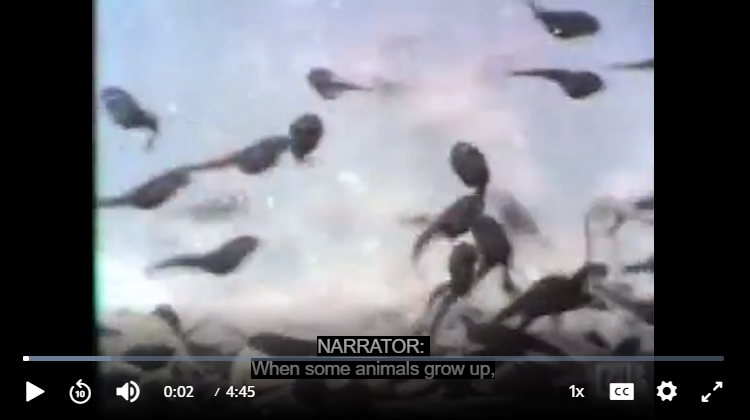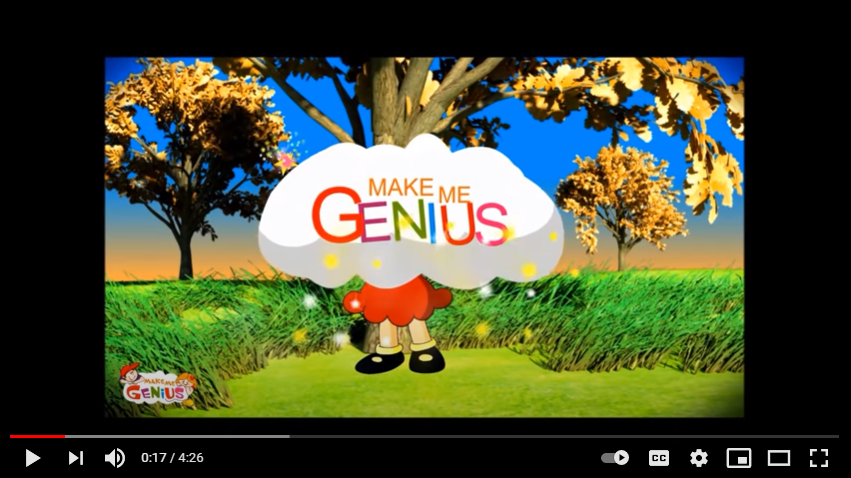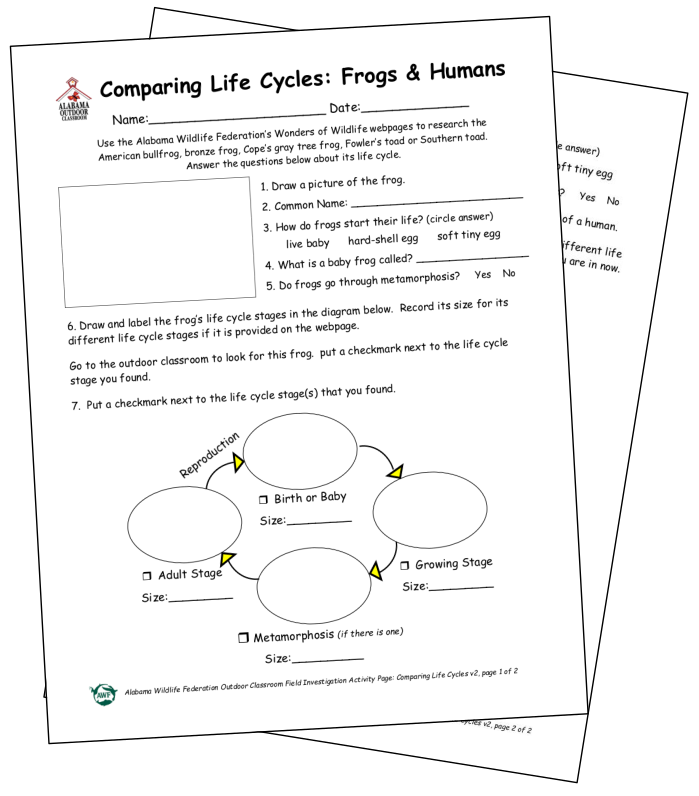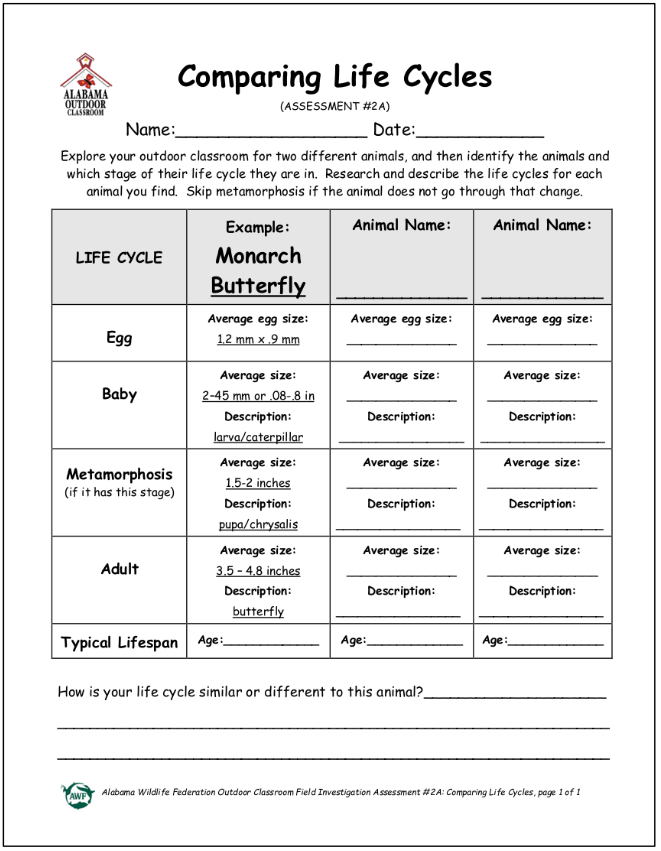Field Investigation: Comparing Life Cycles
Students compare their life cycle (the life cycle of a human) with the life cycle of an animal that they find in the outdoor classroom.
Questions? Contact us at oc@alabamawildlife.org. .
| Click on the orange links to access free educational materials: | |
| Lesson Plans | ALSDE Standards Taught | |
| Activity Page #1: Comparing the Life Cycle of an Animal to a Human (or as Word Doc) | |
| Activity Page #2: Comparing the Life Cycle of a Frog to a Human (or as Word Doc) with Answer Page | |
| Outdoor Activity Materials: activity pages, clipboards, pencils, field identification guides | |
|
Step 1: Engage through Discussion
|
|
| Engage the students and capture their interests with an Interactive Q&A (or as PDF) that allows you to click through the questions one at a time. You can gauge your students' understanding of the topic as they answer the questions. Print and use the Q&A Info Sheet (or as Word Doc) to anticipate the next question in the Interactive Q&A and to guide the conversation with the students. (Note: For the PowerPoint (PPT), click "Slide Show" & "From Beginning" to display the questions and answers separately.) | |
Use these tools to continue the discussion:
|
|
|
Step 2: Explore with Literature
|
|||
| As you read these books, you can further explore the topic and discuss your students' experiences and knowledge around the topic: Frogs by Gail Gibbons ISBN: 978-0823411344 YouTube Video of Frogs by Gail Gibbons- Read by Olivia Gerston with permission from Holiday House Publishers Monarch Butterfly by Gail Gibbons ISBN: 978-0823409099 Caterpillar to Butterfly (National Geographic Kids) by Laura Marsh ISBN: 978-1426315787 |
 |
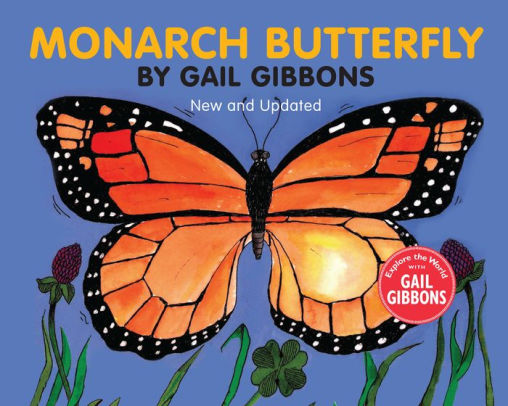 |
|
| Step 3: Explain with an Educational Video | |
| Use these educational videos to help explain the topic in more detail: | |
| Metamorphosis: Change of Plans by PBS (4:45 min.) @ https://www.pbslearningmedia.org/resource /tdc02.sci.life.cyc.metamorph/metamorphosis-change-of-plans |
Life Cycle Video by MakeMeGenius.com (4:26 min.) @ https://www.youtube.com/watch?v=-pHav-3QZkI |
| Step 4: Elaborate with a Field Investigation in the Outdoor Classroom | ||
| Students apply what they have learned as they investigate the topic in your Outdoor Classroom and record their real-world observations on their activity page: | ||
| Version #1: Comparing the Life Cycle of An Animal to a Human |
Version #2: Comparing the Life Cycle of a Frog to a Human |
|
Activity Tips
|
||
| Version #1 - Comparing Life Cycles: Comparing an Animal to a Human Activity Page: PDF (as is) / Word Doc (editable) Procedure Indoor Discussion:
|
||
| Version #2 - Comparing Life Cycles: Comparing a Frog to a Human Activity Page: PDF (as is) / Word Doc (editable) Procedure Indoor Discussion:
|
||
Wildlife Identification Resources:
|
||
| Step 5: Evaluate with an Assessment Activity | ||
| Review and assess the students’ observations and answers on their observation pages:
Evaluate the students' understanding of the topic with the following assessment tools:
|
||
Questions? Contact us at oc@alabamawildlife.org. .
 Wildlife Tag
Wildlife Tag
